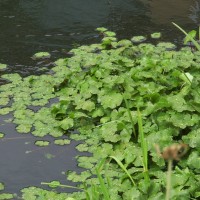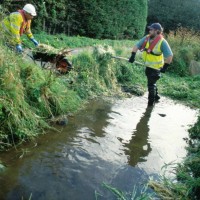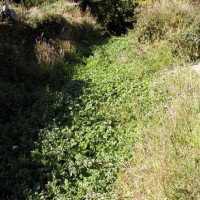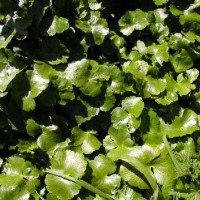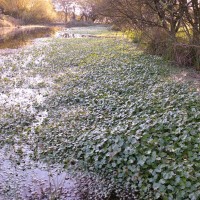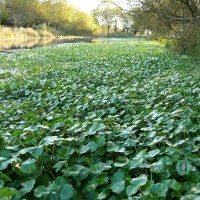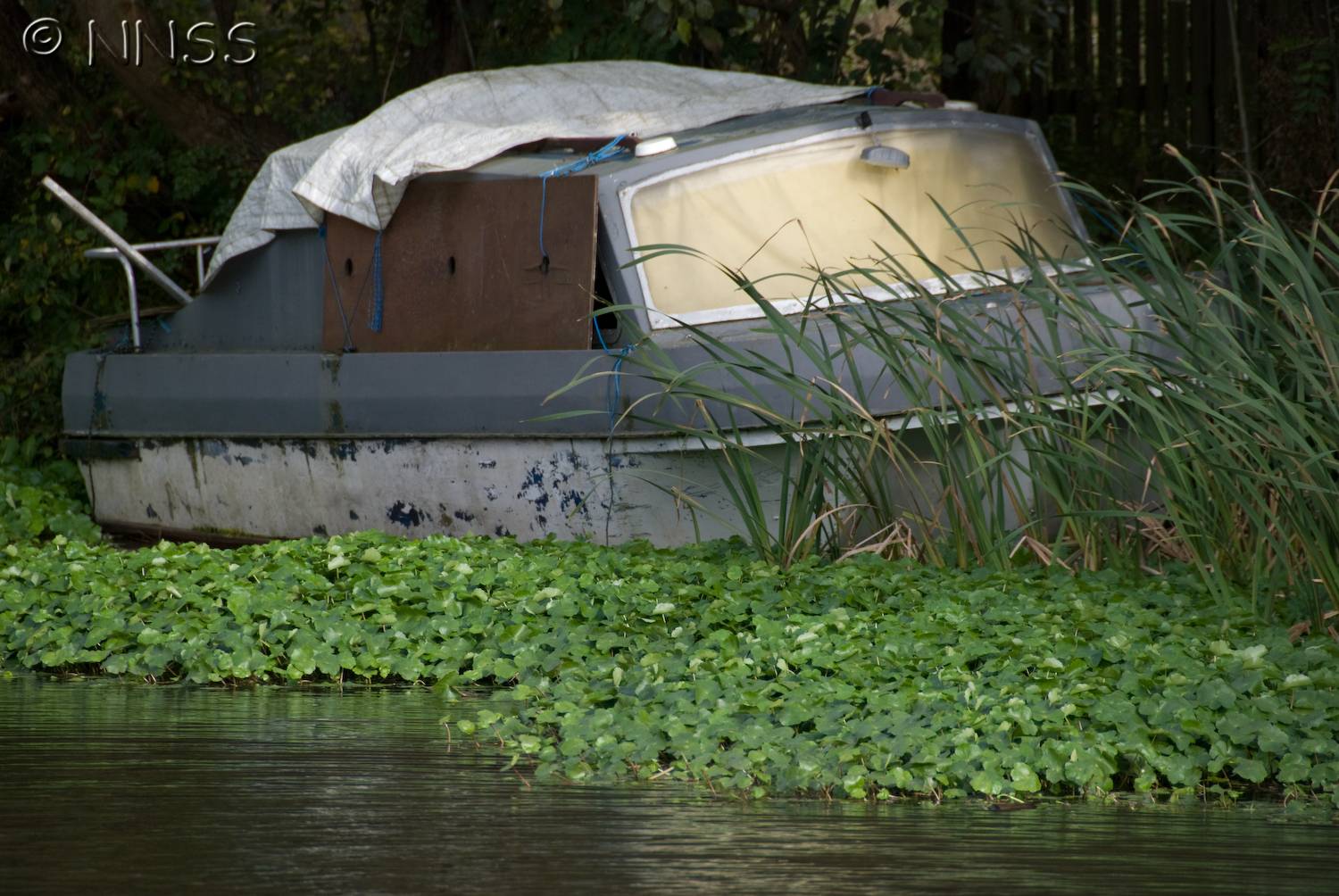
Floating Pennywort - Hydrocotyle ranunculoides
Expand and collapse the sections below by clicking on the title or + / - icons.
Short description of Hydrocotyle ranunculoides, Floating Pennywort
Somewhat fleshy stems with roundish-reniform, bluntly toothed leaves held horizontal but above the substrate, creeping through other vegetation, over soil or over the surface of the water. Flowers without petals, greenish, held erect but on peduncles shorter than the petioles.
Impact summary: Hydrocotyle ranunculoides, Floating Pennywort
Locally, floating pennywort appears to be growing to such an extent that it precludes growth of other aquatic plants, obstructs movements of animals and boats, preventing navigation and recreational use of watercourses.
Habitat summary: Hydrocotyle ranunculoides, Floating Pennywort
In its native habitat, it occurs in shallow pools, the drawdown zones of lakes and in shaded seasonally inundated wetlands. In GB, it has been recorded from still or slow-flowing water in lakes, ponds, streams, ditches and canals.
Overview table
| Environment | Freshwater |
|---|---|
| Species status | Non-Native |
| Native range | Southeastern U.S.A., Mexico, Central America, Cuba, Panama, Ohio, Pennsylvania, Texas, West Virginia |
| Functional type | Land plant |
| Status in England | Non-Native |
| Status in Scotland | Non-Native |
| Status in Wales | Non-Native |
| Location of first record | v.c.18 |
| Date of first record | 1990 |
Origin
Floating pennywort is native to the southern coastal United States, from Philadelphia south and west to Texas, and south to Panama, Cuba and South America.
First Record
It was first recorded in Essex in 1990.
Pathway and Method
It was introduced to GB as an ornamental plant for garden ponds and aquaria from which it spread to natural habitats. Plant fragments may also spread with birds or other animals, but there are no quantitative data available; carried downstream along waterways and possibly upstream attached to boats.
Species Status
It has become established in Australia, South America, Africa, Austria, Belgium, Denmark, Italy, the Netherlands and Portugal. However, it is only considered to be invasive in GB, Belgium and the Netherlands. In France it is naturalised in Corsica, around Paris and maybe more widely in the south, it appeared in Germany in 2004 and is spreading. It is now widely established around and to the north-west of London, at a number of sites on the south coast, the Gwent Levels and in the north-west Midlands, in a total of more than 50 10 km squares
Dispersal Mechanisms
It has no natural dispersal mechanisms in GB, but plant fragments and seed may also spread with birds or other animals, but there are no quantitative data available; carried downstream along waterways and possibly upstream attached to boats.
Reproduction
It is likely that the main reproductive strategy is vegetative (Preston et al. 2002). Like many aquatic plants, it is likely that very small fragments are able to root, thus aiding establishment. Seed form in GB, but the extent to which they play a role in reproduction is not known.
Known Predators/Herbivores
None known.
Resistant Stages
None known.
Habitat Occupied in GB
It is widespread in canals, ditches and slow-flowing rivers and has been recorded from ponds and gravel pits.
Floating pennywort is concentrated in an area around and to the north of London into coastal Norfolk, with a few records along the south coast, the Gwent Levels and the West Midlands, from Cheshire northwards.
Environmental Impact
Dense growth of floating pennywort can disrupt natural erosion-deposition processes, disrupt the movement of animals, out-compete native aquatic plants, block light needed for photosynthesis, disrupt predator - prey relationships, prevent wind mixing, leading to localised oxygen depletion, create mosquito breeding areas and increase water temperature by absorbing sunlight, while die back can increase nutrient loads to the water.
Health and Social Impact
Potential impacts include: detriment to tourism, fishing and water sports.
Economic Impact
In the Netherlands, some water boards faced a doubling of costs each year during the 1990s, and, in 2000, the total annual control costs were around 1 Million Euro. In the Canning River in Western Australia floating pennywort became a serious problem in 1992. A program costing over AU$ 200,000 in the first year was implemented. In GB, the estimate for control of the total area infested by floating pennywort by herbicides is between £250,000 and £300,000 per year. It can also disrupt navigation, damage waterworks by blocking pipes and pumps, or lead to flooding as well as disrupting commercial fishing and other commercial exploitation of water bodies.
Identification
Stace, C.A. (2010) New flora of the British Isles, Third Edition, Cambridge University Press, Cambridge.
Lansdown, R.V. (2009) A field guide to the riverine plants of Britain and Ireland. Ardeola, Stroud, Gloucestershire.
Biology, ecology, spread, vectors
Non-native species secretariat risks assessments
Management and impact
Non-native species secretariat risks assessments
GB Floating Pennywort Strategy
General
Spotted this species?
Distribution map
View the Distribution map for Floating Pennywort, Hydrocotyle ranunculoides from BSBI

Native range map
View an interactive native range map for Floating Pennywort, Hydrocotyle ranunculoides
Risk assessment
Risk assessment for Hydrocotyle ranunculoides. See a full list of non-native species Risk assessments.
Management
View the GB Floating Pennywort Strategy. Further guidance has been developed through the Strategy, view this and other management practices for Hydrocotyle ranunculoides. See all management information.
Legislation
This species is:
- A Species of Special concern
- Listed under Schedule 9 of the Wildlife and Countryside Act 1981
- Prohibited from sale under The Wildlife and Countryside Act 1981 (prohibition on Sale etc. of Invasive Non-native Plants) (England) Order 2014
Read more about Non-native species legislation.

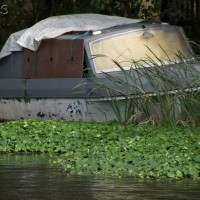
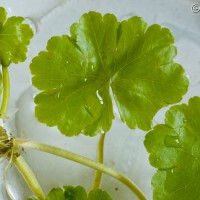
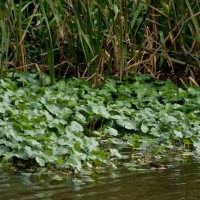
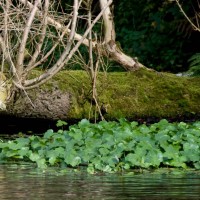
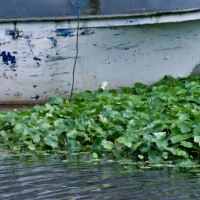
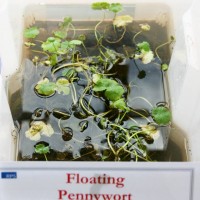
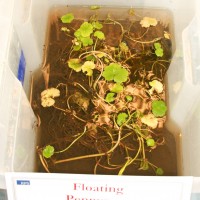
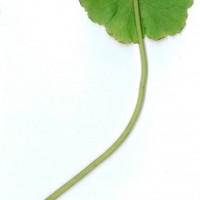
__FillMaxWzIwMCwyMDBd.jpg)
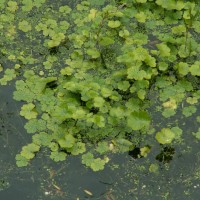
.jpg)
.jpg)
.jpg)
